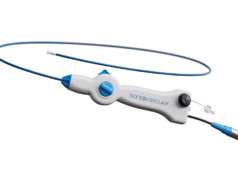
The Janssen Pharmaceutical Companies of Johnson & Johnson announced today new results from the Phase 3 EINSTEIN-Jr study, showing paediatric patients (aged birth to 17 years) treated with rivaroxaban (brand name Xarelto) had a similar low risk of recurrent venous thromboembolism (VTE) and similar rates of bleeding when compared to current standard anticoagulation therapy.
These results, from the largest paediatric study ever conducted for the treatment of VTE, also show that the efficacy and safety profile of rivaroxaban in a paediatric population with VTE is comparable to what has been observed in previous studies of adults with VTE. The full findings were presented during a late-breaking session at the 27th Congress of the International Society on Thrombosis and Haemostasis (ISTH; 6–10 July) in Melbourne, Australia.
While VTE more commonly occurs in adults, it affects approximately 58 per 10,000 hospitalised children in the USA. There are very limited treatment options for these young patients, and no direct oral anticoagulant is currently approved for use in this setting. Current treatment is mainly based on observational data in this group and extrapolation of data obtained in adults, even though the pathophysiology and anatomic distribution (where it occurs in the body) of VTE, along with anticoagulant responses, differ between children and adults. Until EINSTEIN-Jr, only one small randomised trial had been published evaluating the use of standard anticoagulants in paediatric patients with VTE. Current guidelines recommend that young patients with VTE be treated with standard anticoagulation therapy. For these patients, physicians manipulate adult dosage forms of these older anticoagulants, many of which require injections and regular laboratory monitoring.
“This trial examined for the first time whether a direct oral anticoagulant could alleviate the burden of blood clots in young patients, which would allow them to focus on recovering from their other health challenges,” said Christoph Male, Department of Paediatrics, Medical University of Vienna, Vienna, Austria. “The EINSTEIN-Jr study with rivaroxaban represents a significant advance for paediatric VTE treatment.”
The main efficacy outcome of EINSTEIN-Jr was symptomatic recurrent VTE (fatal or non-fatal), and the principal safety outcome was the composite of major and clinically relevant non-major bleeding. The study met all of its pre-specified endpoints.
The following observations were made:
- Recurrent VTE was similar in both treatment groups, with a numerically lower number of events in patients treated with rivaroxaban. Specifically, 1.2% of the rivaroxaban group and 3% of the standard anticoagulation group experienced a recurrent event (HR: 0.40; 95% CI, 0.11–1.41); there were no fatal VTE events in either treatment arm.
- Clinically relevant bleeding was also similar, occurring in 3% of the rivaroxaban group and 1.9% of the standard anticoagulation group (HR: 1.58; 95% CI, 0.51–6.27). There were no major bleeding events in the rivaroxaban group, and two major bleeding events in the standard anticoagulant group.
- In addition, the composite of recurrent VTE and major bleeding (net clinical benefit) occurred in 1.2% of the rivaroxaban group and 4.2% of the standard anticoagulation group (HR: 0.30; 95% CI, 0.08–0.93).
The efficacy of the drug was further demonstrated by reduction in clot burden on imaging tests that were conducted on patients both at baseline and at the end of the treatment period. Complete resolution of the initial VTE mass occurred in 38.5% of the rivaroxaban group compared to 26.1% of the standard anticoagulation group (Overall Response: 1.72; 95% CI, 1.12–2.69).












